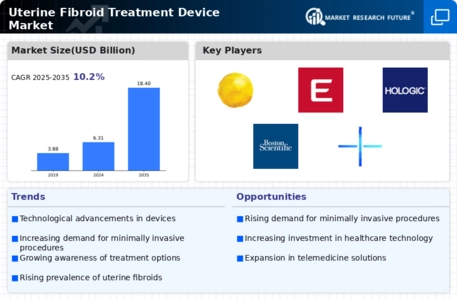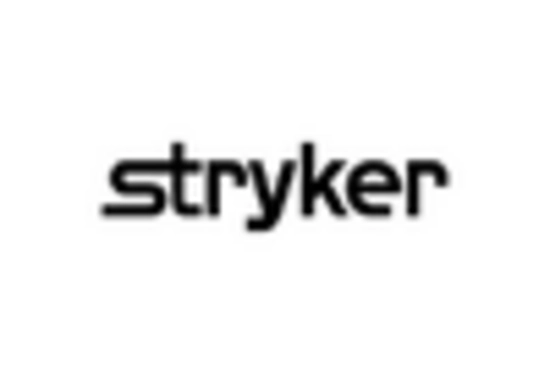Market Share
Uterine Fibroid Treatment Device Market Share Analysis
First of all, the Uterine Fibroid Treatment Device Market is witnessing rapid growth and therefore companies have to adopt several strategies to boost their market share in the health care sector. Such a strategy involves differentiation, which focuses on developing innovative and sophisticated uterine fibroid treatment devices. Therefore, such organizations invest heavily in research and development so as to produce products with high levels of precision, less invasion and increased patient results. To attract gynecologists who are seeking for state-of-the-art devices used for managing uterine fibroids, firms should provide unique solutions that are of superior quality.
The pricing strategy plays an important role in market share positioning within Uterine Fibroid Treatment Device Market. Some manufacturers opt for competitive prices that enable them present their devices as cost-effective alternatives that do not compromise on quality. This is mostly applicable when it comes to healthcare markets where costs matter a lot. Affordable yet high-performance uterine fibroid treatment devices can capture a larger market share, appealing to a broad spectrum of healthcare providers and contributing to increased adoption.
Strategic alliances and collaborations are vital when dealing with the complexities of Uterine Fibroid Treatment Device Market environment. In most cases, these partnerships will be established with gynecology clinics or academic institutions as well as other firms in the industry in order to leverage shared resources, exchange expertise or expand distribution networks among others. Collaborations also facilitate the development of comprehensive solutions combining treatment devices with complementary technologies or services. Strategic partnerships help companies grow their presence in the market while staying ahead of new developments in uterine fibroid treatment.
Market segmentation is another key strategy where companies tailor their uterine fibroid treatment devices to address specific patient demographics, clinical needs, or procedural requirements. This helps in designing targeted therapies for different modes including minimally invasive procedures like hysteroscopic interventions or focused ultrasound. Becoming specialists by addressing diverse needs of gynecologists and patients is a way of gaining competitive advantage and maximizing market share in specific segments.
Effective marketing and promotional activities are essential for market share positioning in the Uterine Fibroid Treatment Device Market. This awareness creation may include; demonstrating the efficacy of advanced treatment devices, running campaigns that offer healthcare providers information about their use, and creating utility materials among others. These channels include medical conferences, gynecological publications, and digital platforms which help companies meet their target audience, create brand awareness, resulting to improved market shares.
Many corporations utilize global expansion as a strategy to explore new markets and increase their overall market shares in this area. Thus, an understanding of the regions where uterine fibroids are increasingly prevalent coupled with increasing demand for modern treatment options provides an opportunity for expanding customer base. However, successful global expansion requires deep knowledge of domestic healthcare law, cultural aspects aside from clinical practices that would facilitate smooth entry into such markets besides sustainable growth.

















Leave a Comment